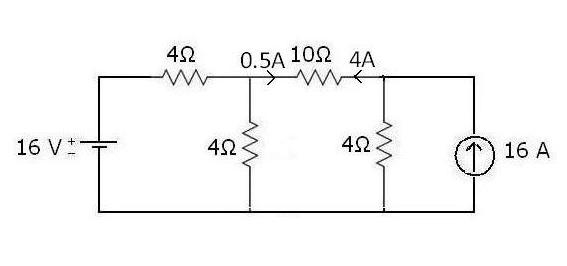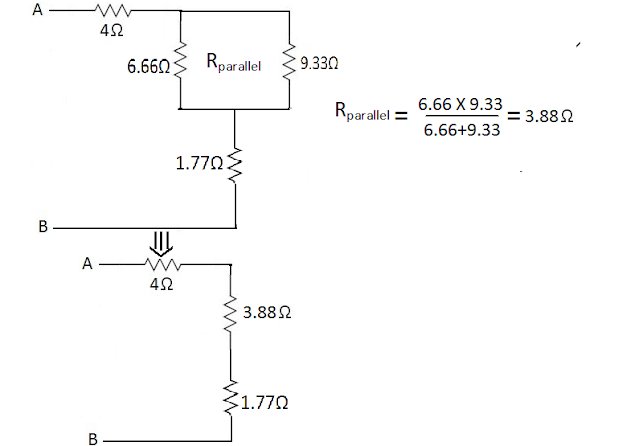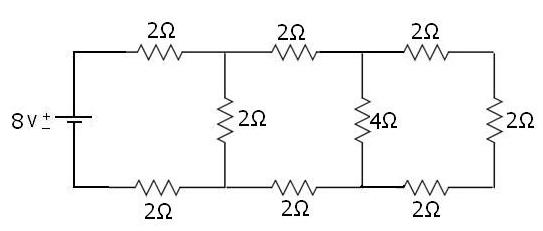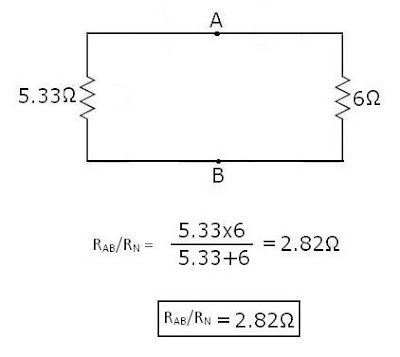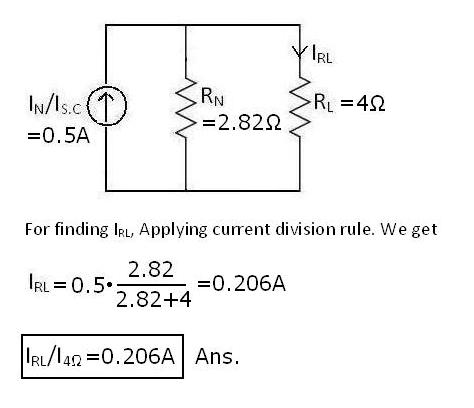Reading Maximum Power Transfer Theorem Problems In Practical
In This Below Network, Our Aim To Find The Value Of Resistance At Load i.e, RL As Mentioned And Also Determine The Maximum Power Through Load Resistance RL By Using "Maximum Power Transfer Theorem".
To Solve The Above Problem, We Will Follow Below Steps One By One:-
By Using The Definition Of "Maximum Power Transfer Theorem", As We Discussed The Load-Resistance Will Be Disconnected From The Circuits And The Point A & Point B Both The Ends Will Be Act As "Equivalent Resistance", For Which We Will Find The Answer By Using Our Previous Method Of Solving.
Now, After Removing Load-Resistance The Network Will Be Like As Below And We Will Solve This To Find "Equivalent Resistance".
(If You Miss To Learn, Kindly Have Revision By Reading Previous Posts)
Here Also Note That Voltage Source Will Be "Short-Circuited", Remember Current Source Will Be "Opened Circuited".
Now, Move Forward
Hence, The Load Resistance/Equivalent Resistance Is "3.77 Ohms"
Now, We Need Voltage Across Point A & Point B. After This Only We Can Apply Direct "Maximum Power Transfer Theorem" Formula.
Now, For Maximum Power through Point A & Point B, Need to Find Vo.c.
Here, Vo.c is known as "Voltage" between Open Circuits (Point A & Point B).
So, Next Steps Is:-
By Applying "Kirchhoff's Voltage Law", We Can Easily Determine The Value Of Both Loop i.e, Loop 1 & Loop 2 As Shown In The Network As Above.
Applying "Kirchhoff's Voltage Law" in loop 1st:-
6-6I1-8I1+8I2=0
-14I1+8I2=-6 ∙∙∙∙∙∙∙∙∙∙∙∙∙∙∙∙∙∙∙∙∙∙∙∙∙∙∙∙∙∙∙∙ (1)
Applying "Kirchhoff's Voltage Law" in loop 2nd:-
-8I2-5I2-12I2+8I1=0
8I1-25I2=0 ∙∙∙∙∙∙∙∙∙∙∙∙∙∙∙∙∙∙∙∙∙∙∙∙∙∙∙∙∙∙∙∙ (2)
By Solving Equation (1) & Equation (2), We Will Get Answer:-
I1 = 0.524 A
I2 = 0.167 A
Now, From the Circuit Vo.c is
VA-5I2- VB = 0
Vo.c/ VAB= 5I2 = 5X0.167 = 0.835v
So, the "Maximum Power Transfer" Through RL Will Be:-
Trending Posts This Month:-
Solved Examples Problems On Star-Delta Transformation Or Conversion
Solved problem based on Norton’s Theorem
Solved Problem Based On Superposition Theorem
Example Solved Problems Based On Thevenin Theorem Circuit
Tricky Solutions For Equivalent Series-parallel Resistance Problems With Examples
Solved Problem Based On Maximum Power Transfer Theorem
Mesh-analysis - Loop-analysis -Maxwell's Current Analysis | Electrical
Delta To Star Transformation Or Delta To Star Conversion and Its Formulas
Superposition Theorem And Method Of Solving Superposition Theorem
Reading Problems Based On Superposition Theorem Example & Solved Formula's













